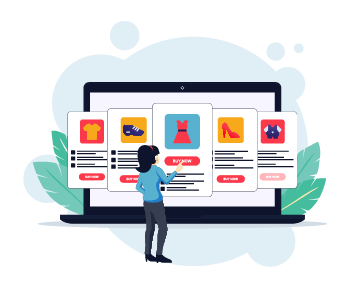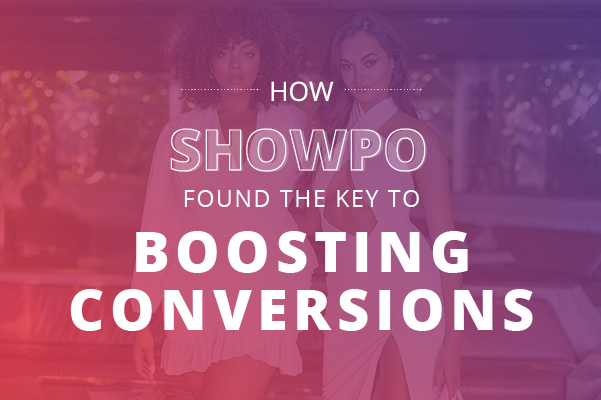How To Measure Store Performance
What is Store Performance?
Not that long ago, the performance of a store was measured by foot traffic, sales, units per transaction, conversion, profit and growth. Online stores were similar, tracking visits, repeat customers, sales, AOV (average order value), average basket size, time on site, cost per conversion and more.
While these are still valid and important KPIs, the new wave of retail requires a more sophisticated and holistic view to measuring performance. A “store” is no longer a single shopfront, or a single online store. Most retailers sell both online and in a physical retail store, and many sell via multiple sales channels – in fact, 41% of online spending globally is via Marketplaces.
Shoppers are now more digitally savvy. A “sale” is not as simple as a customer walking into a store and making a purchase, and so KPIs shouldn’t be structured in such a narrow way. Today, shoppers use multiple channels to complete a single transaction, bouncing around online and offline. They may start their journey with a search or on social media, switch between ecommerce stores, marketplaces, apps, review sites, and may even browse a physical store. 85% of customers start a purchase on one device and finish it on another, and this needs to be considered when looking at store performance.
Why is it important for retailers to track their store’s performance?
Tracking performance helps identify strengths and weaknesses. Retailers can play to their strengths, while addressing their weaknesses.
In an omnichannel world, everything is live, and so it’s important for retailers to track performance constantly. Having visibility over what is going on right now can help retailers take immediate action. For example, your busiest physical store could be very behind on packing and fulfilling their online orders. An order management solution, integrated with an ecommerce platform such as Shopify, can alert the retailer and automatically stop sending orders to that store until they’ve had a chance to catch up. ‘The power of now’ is extremely powerful and key to ensuring the customer experience remains seamless.
It’s also vital for retailers to track their channel performance constantly; which channels are performing, and which aren’t? A Channel Manager connected to your ecommerce platform enables you to sell on marketplaces globally. Tracking their performance allows retailers to assess their suitability and profitability – are their synergies with their customer base and yours? Are your products suited to this channel? If it’s not performing for you, turn it off!

What metrics should retailers keep an eye on?
Product discovery.
Understanding how your products are being (or not being) discovered will help you reach other potential customers. Where are your most loyal and top customers searching, and how are they finding your products? How can your product content be used more effectively to assist with SEO and discoverability? As we know, shoppers jump from channel to channel, offline to online and back again. Consistent, accurate and comprehensive product information will help shoppers find what they’re looking for, convert and have an amazing brand experience.

Inventory accuracy.
Omnichannel features, such as ship from store or click and collect will fail in a miserable heap if store inventory isn’t 100% accurate. During the recent stock shortages, many retailers changed when their inventory was technically ‘instore’ from when the stock was delivered to when it was actually available for sale on shelves. Partial shipments from suppliers caused havoc on inventory counts, which then in turn affected the customer experience.
PRO TIP: Always set inventory buffers.
If there’s one item left in stock on a shelf that’s available for sale online, how do you know someone instore hasn’t picked it up and is on their way to the checkout? Customers loathe going through the purchase process, only to be told their chosen item isn’t in stock at checkout, or – worse – after the sale has been made.
Return rate.
Returns happen. Retailers need to embrace them, and accept that they are simply a part of business. But why measure them in terms of store performance? Two reasons: Firstly, retailers need to learn from returns. Why is the customer returning the item? How did it not meet their expectations? Understanding this will help you improve your product content; does the size run small? Does it look more purple than blue in the light? Understanding why an item is returned, and then actioning it, will help reduce your return rate.
The second reason to track this is converting a return into an exchange, turning a negative experience into a positive one. If your inventory is unified across all your sales channels, a customer service rep is empowered to find the required item, whether it be a different size or colour, and have it shipped directly to the customer.
How can store performance be improved?
Double down on data.
In a digital-first world, data is everything. Product data, customer data, store data – the list goes on and on. Not only does data need to be rich, it also needs to be consistent. Ensure product consistency across all your sales channels with a PIM – manage everyone from the one place and streamline processes with ecommerce automation.
Establish complete visibility.
You can’t fix what you can’t see. Complete visibility across all your sales channels – products and inventory, customer data, orders management, fulfilment, warehouses, drop shippers and more – is vital. Having real-time data will help you make quick decisions and take immediate action.
Understand How Each “Store” Fits into the Shopper Journey.
Your retail storefront may not be the point of conversion for your customers – it may be used more as a brand experience centre. Or your website might be where the product discovery and research takes place, and the conversion happens instore. Understanding how your customers engage with each of your channels will help you tailor the product and brand experience to that particular channel.

